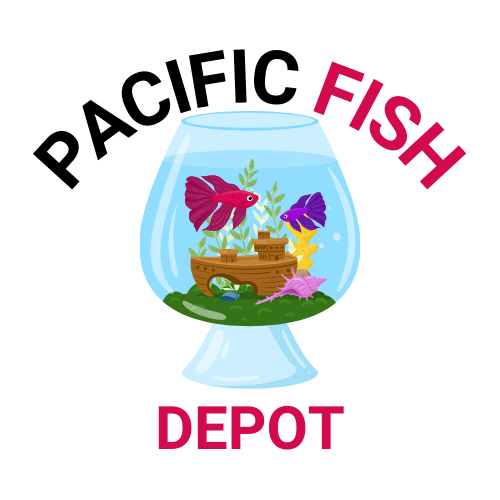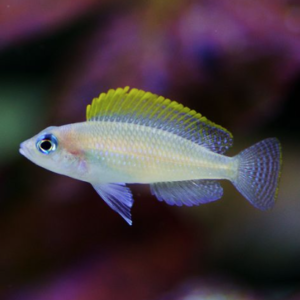No products in the cart.
Where to Buy Multi Shell-Dwelling Cichlid
The Multi Shell-Dwelling Cichlid is a small but incredibly fascinating freshwater fish species, native to the rocky, sandy shores of Lake Tanganyika in East Africa. Known scientifically as Neolamprologus multifasciatus, this species is the smallest known shell-dwelling cichlid and often referred to as a “Multi.” Their unique behavior, where they use empty snail shells as both homes and breeding sites, makes them an intriguing choice for aquarists interested in natural, behavior-focused setups.
Now available at Pacific Fish Depot, these captivating fish are offered in healthy, captive-bred condition and shipped securely for stress-free acclimation.
Behavior and Appeal
Despite their tiny size — adults rarely exceed 1.5 inches — Multis are full of personality. They live in colonies, often creating complex social structures around clusters of shells placed on the tank floor. Watching them dig, move sand, and defend their shells is both entertaining and educational.
Unlike more aggressive cichlids, Multis are relatively peaceful and can be kept in groups. Their natural social behavior and intelligent interactions make them a favorite among aquascaping enthusiasts and hobbyists seeking something different.
Tank Setup for Shell-Dwellers
These cichlids thrive in tanks that mimic their native habitat — flat sandy bottoms scattered with plenty of empty snail shells. Multis require space to dig and shift shells, which becomes part of their daily activity.
Minimum Tank Size: 20 gallons (larger for colonies)
Temperature: 75–80°F (24–27°C)
pH: 7.8–9.0
Water Hardness: 8–20 dGH
Substrate: Fine sand (not gravel)
Decor: Dozens of cleaned snail shells (e.g., escargot shells)
Multis will rearrange their environment by moving sand, burying shells, or relocating them. It’s important to provide a deep enough sand bed (2+ inches) and at least 2–3 shells per fish to avoid territorial conflict.
Feeding and Nutrition
These micro-carnivores feed on plankton, small crustaceans, and insects in the wild. In aquariums, they accept a variety of prepared foods:
Crushed cichlid pellets
High-quality micro pellets
Baby brine shrimp (live or frozen)
Daphnia and cyclops
Crushed flakes
Feed them once or twice daily in small portions. Overfeeding should be avoided to maintain water quality and shell cleanliness.
Tank Mates and Compatibility
Multis do best in species-only setups or with other peaceful Tanganyikan fish that inhabit different levels of the tank. Good companions include:
Julidochromis species (rock dwellers)
Cyprichromis (mid-water swimmers)
Small Synodontis catfish
Avoid aggressive cichlids or fish that compete for shells. Their success depends on space, clean water, and a low-stress environment.
For Hobbyists Seeking Natural Behavior
Shell-dwelling cichlids offer something that few other aquarium fish do — a window into complex, natural behavior in a micro-sized package. These fish dig, excavate, breed, and defend territories in a way that reflects their wild origins. Their care is rewarding, especially when observing breeding rituals and colony dynamics.
If you’re looking to go beyond standard fishkeeping and build a living, breathing shell bed of activity, Multis are one of the most fascinating and affordable options.
You can read more about shell-dwelling cichlids on respected sources like Seriously Fish, which provides deep insight into their biology and care.
Frequently Asked Questions
1. How many Multi Cichlids should I keep together?
Start with 6 to 10 in a 20-gallon tank. They prefer groups and will form colonies around shell clusters.
2. Do they need real snail shells?
Yes. Real escargot or mystery snail shells are ideal. Plastic imitations don’t offer the same functionality.
3. Will they breed easily?
Yes. In the right conditions, they breed readily. Fry are typically raised in the same tank without issue.
4. Can they live in a community tank?
Only with peaceful, non-competing fish that won’t disturb the shells or occupy the substrate.
5. How do I tell males from females?
Males are slightly larger with more prominent dorsal fins, but visual differences can be subtle.










Reviews
There are no reviews yet.